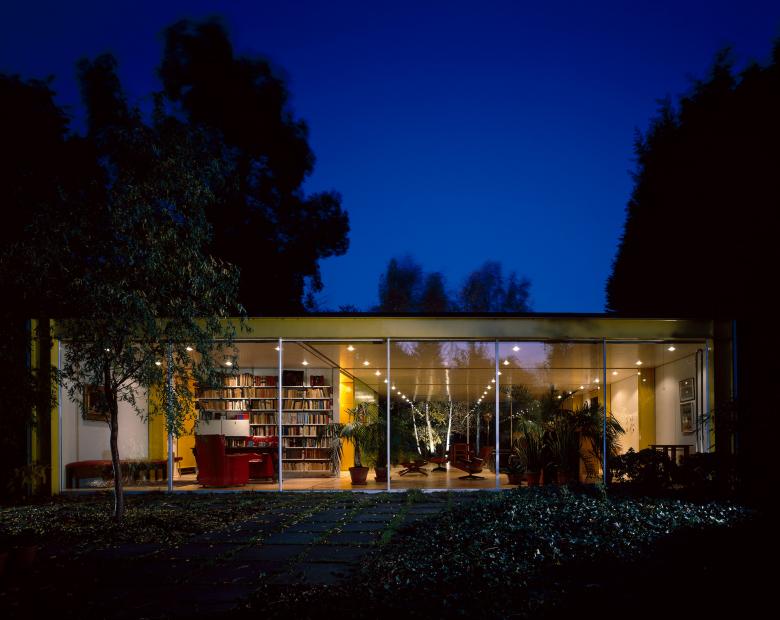6 Fellows to Wimbledon House
John Hill
12. December 2018
Photo: Richard Bryant/Courtesy Rogers Stirk Harbour + Partners
Harvard GSD has announced the six winners of the 2019 Richard Rogers Fellowship, a residency program at Wimbledon House, the landmarked residence designed by Lord Richard Rogers for his parents in the late 1960s.
This is the third time Harvard GSD has awarded the 3.5-month residencies, which are given with travel expenses to London and a $10,000 cash purse. Nearly 140 people applied for the fellowship, whose deadline was the end of October. The winners are listed below with brief information, courtesy of Harvard GSD, on the subjects they'll be researching during their stays at Wimbledon House.
Spring Fellows
Esther Choi (New York, NY): "The Organization of Life: Architecture and the Life Sciences in Great Britain, 1929-1951"
Choi's Richard Rogers Fellowship proposal will explore the exchanges that took place between scientists, architects, artists, and designers to reimagine Great Britain as a scientifically-ordered world after the economic crash of 1929.
John Paul Rysavy (New York, NY): "A Brick is a Brick: Material and its Image in Postwar London"
Rysavy will explore cultures of brick construction associated with late modern and postmodern practice through writing and photogrammetry.
Summer Fellows
Sarosh Anklesaria (Ithaca, NY): "Embedded Resistances within Neoliberal Regimes: Activist-Architects and the Contested Spaces of London’s Traditional Markets"
Anklesaria's proposal stitches together two broad themes of research that have occupied his creative pursuits: architecture’s capacity to generate inclusive forms of public space, especially in the context of the neoliberal city, and the traditional market as the site of these contestations.
Maria Letizia Garzoli (Novara, Italy): "The Leasehold Uncanny Persistency: Shaping London Great Estates"
Garzoli's Richard Rogers Fellowship research seeks to represent how the leasehold property law shaped and shapes the architectural and social panorama on the lands of the great estates of West London.
Fall Fellows
Peter Christensen (Rochester, NY): "Materialized: the Global Life of Architectural Steel"
Christensen plans to use the Richard Rogers Fellowship towards research for his forthcoming second book. By following the life of steel from the collection of raw minerals and metals to the distribution of finished goods in the long nineteenth century ... Christenen’s book aims to challenge the traditional narrative that architectural steel was the primary and heroic material responsible for architectural modernism.
Michael Waldrep (Berlin, Germany): "Finding the Green Belt: Preservation, New Towns, and Development on the Urban-Rural Landscapes of Greater London"
As a culmination of an ongoing multimedia investigation into the global spread and differentiation of suburban planning and architecture, Waldrep's proposal for the Richard Rogers Fellowship is to document the edges of Greater London. His project will seek to bring to light ... the myriad interacting factors that permeate the Metropolitan Green Belt.
